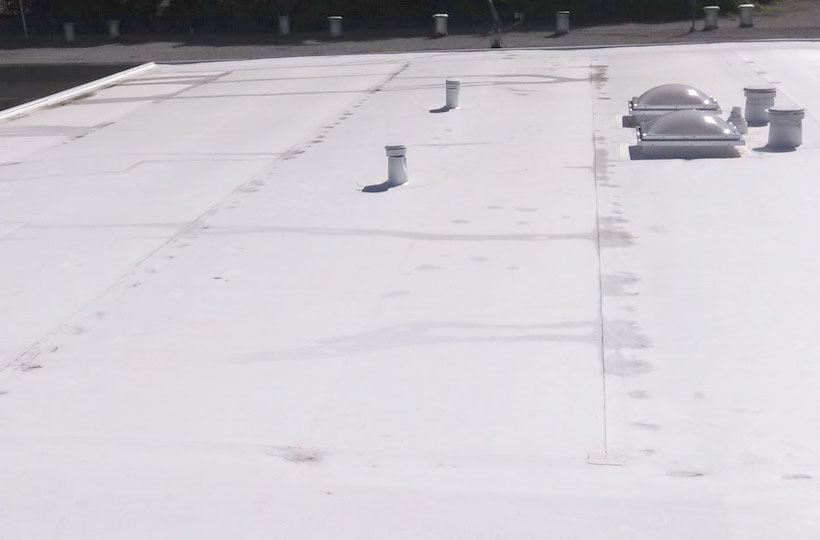When you’re considering a built-up roof for your commercial building you may wonder how long it will last, and whether it’s a smart long-term investment. Built-up roofing systems are known to be durable and can stand the test of time. However, their installation can be expensive. Is your initial investment in a built-up roof going to pay off down the road?
What is A Built-Up Roof?
Built-up roofs can only be used on flat or low-slope roofs. They are made of many layers of asphalt and sometimes gravel. The asphalt can be rolled out like a sheet, or heated up until it is liquid and slathered on with mops in a process called hot mopping. Either way, a BUR system will have many layers of this material. Roofers top the roof off with either layer of loose gravel or a “cap sheet” of asphalt.
The idea behind this type of roof is that if one layer develops a hole, the others aren’t likely to, at least not in the same spot. The system provides a lot of redundancy and durability.
How Long Does a Built-Up Roof Last?
In general, a properly installed built-up roofing system will last 20 to 30 years. However, a lot depends on the quality of the installation of the roof, as well as the number of layers (also know as piles) it has. Each layer will get you approximately five years, but no system will have less than three layers.
What Effects a BUR System’s Longevity?
The quality of installation will change your roof’s longevity. If your roof was installed as sheets of asphalt, each sheet has to be manually heated with a torch as it is rolled out, so it bonds to the layer below and doesn’t leave an air pocket. The other method of installation is heating chunks of asphalt to a very specific temperature and applying it quickly while it maintains that heat. There is a lot of room for error in both methods.
Should You Choose Built-Up Roofing?
BUR roofs have a few advantages over the competition. Compared to single-ply membrane roofing they are low maintenance, seamless, and more resistant to ultraviolet rays.
However, built-up roofing has disadvantages. This roof type requires that roofers use either gas torches on the roof or use kettles to heat the asphalt until it’s liquid, which comes with safety risks and takes considerable time. Built-up roofing also may not be your best choice if your roof can’t handle much additional weight, as all of those layers are heavy.
Though built-up roofs will not need to be repaired for some time, it is costly when they do need repairs. Often, infrared cameras must be used to find leaks, especially those beneath the cap layer. However, the costs of occasionally repairing a built-up roof may not be as large as the regular maintenance costs of a single-ply roof system.
In the end, you should ask your roofer about whether a built-up roofing system is the best investment for your commercial roof. They can give you advice with your specific climate and building in mind.

